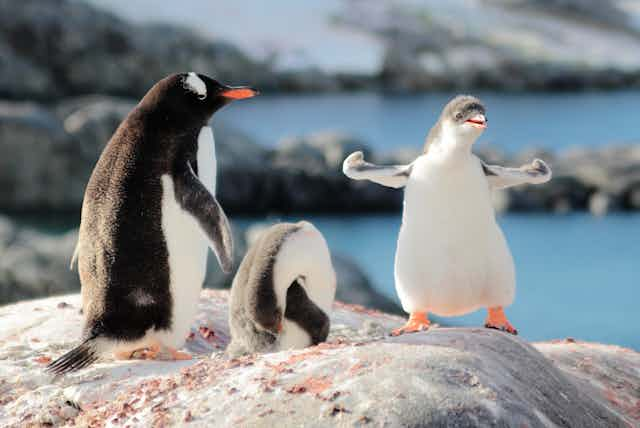Many experts believe we may soon face a mass extinction event, with a high proportion of Earth’s species dying out. Projections indicate the climate will continue to change for centuries to come, and this is a significant threat to biodiversity that has already had an impact on many species.
Despite the threat that climate change poses to biodiversity, we do not yet fully understand how it causes animals to go extinct. In our new paper, published in Science, we used the fossil record to make more precise estimates.
The geological rock record provides critical insight on past extinctions caused by a variety of climate change events. Fossils therefore offer a rare opportunity to understand the mechanisms of extinction and investigate how climate shifts have led to extinction in the past. Understanding why species went extinct under natural, pre-human conditions is paramount, since human-induced extinction drivers are accumulating over time.
By identifying which traits are linked to extinction, we can potentially use this knowledge to identify at-risk species to prioritise in conservation efforts.
In our latest research article, we analysed a data set comprising over 290,000 marine invertebrate fossils, covering the last 485 million years of Earth’s history. We looked directly for the traits most crucial for survival in the geologic past.
Previous studies have highlighted small body size and limited geographic range size (the spatial extent occupied by a species) as key predictors of extinction risk throughout geological history.
We reconstructed the climate for 81 geological stages across the Phanerozoic (the current geological era, starting 541 million years ago). And we used climate models to determine the range of temperatures that each species can endure.
These factors were then compared against geographic range size and body size to assess their relative importance. We then estimated an external factor that may impact risk of extinction: the magnitude of climate change experienced by each species.
We assessed how the intrinsic traits, such as temperature tolerance and body size, compared to climate change in affecting a species’ risk of extinction. Our study is the first to directly compare traits to external factors in determining what drives extinction.

Our findings revealed that species inhabiting climatic extremes, such as polar or equatorial regions, were particularly susceptible to extinction. Species with a narrow thermal tolerance of approximately less than 15°C faced a significantly higher risk of extinction. We also found that smaller-bodied species are more prone to extinction due to both climatic and other changes.
However, the most important predictor of extinction risk was geographic range size. Species with smaller ranges, occupying more geographically-confined areas, had a higher likelihood of extinction.
Conservation is needed
Alarmingly, our research has, for the first time, identified climate change as a significant predictor of extinction, alongside other species’ traits.
We observed that species subjected to local climate changes of 7°C or greater across geological stages were significantly more likely to face extinction. This suggests that surpassing this climate change threshold increases the likelihood of extinction for a species, regardless of its other traits.

That said, the research shows that there is a cumulative effect of these variables on extinction risk. This underscores the importance of considering a broad spectrum of factors when assessing vulnerability to extinction.
For instance, a species residing in polar regions, characterised by a small geographic range size and body size, and subjected to significant climate change, would face a higher extinction risk than what might be inferred if considering only its geographic range. This holistic approach reveals the interplay between various biological and environmental factors in determining species’ survival over geological timescales.

Our research underscores the urgent challenge climate change poses to global biodiversity. But it also emphasises the necessity for continued research.
Many uncertainties remain when it comes to extinction risk, particularly around why certain traits confer extinction resistance and how traits interact to effect extinction risk. This additional research is essential to fully leverage our study’s implications for conservation strategies.
Without immediate and targeted conservation efforts, informed by a deeper understanding, we risk moving toward a sixth mass extinction event. So our work provides a pivotal call to action. We should mitigate climate change, but also do more research to bolster our understanding of the impacts on vulnerable species.

Don’t have time to read about climate change as much as you’d like?
Get a weekly roundup in your inbox instead. Every Wednesday, The Conversation’s environment editor writes Imagine, a short email that goes a little deeper into just one climate issue. Join the 30,000+ readers who’ve subscribed so far.

